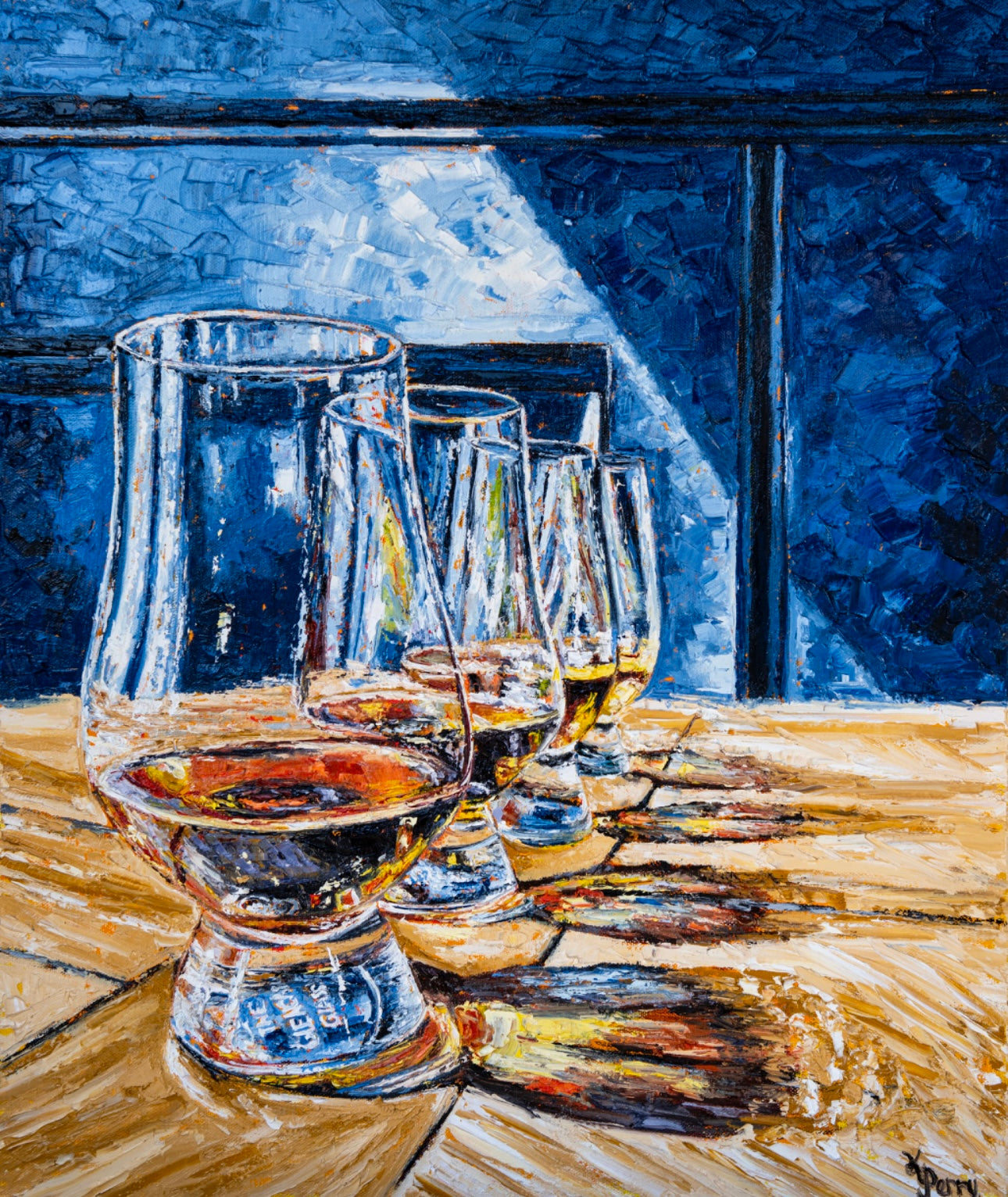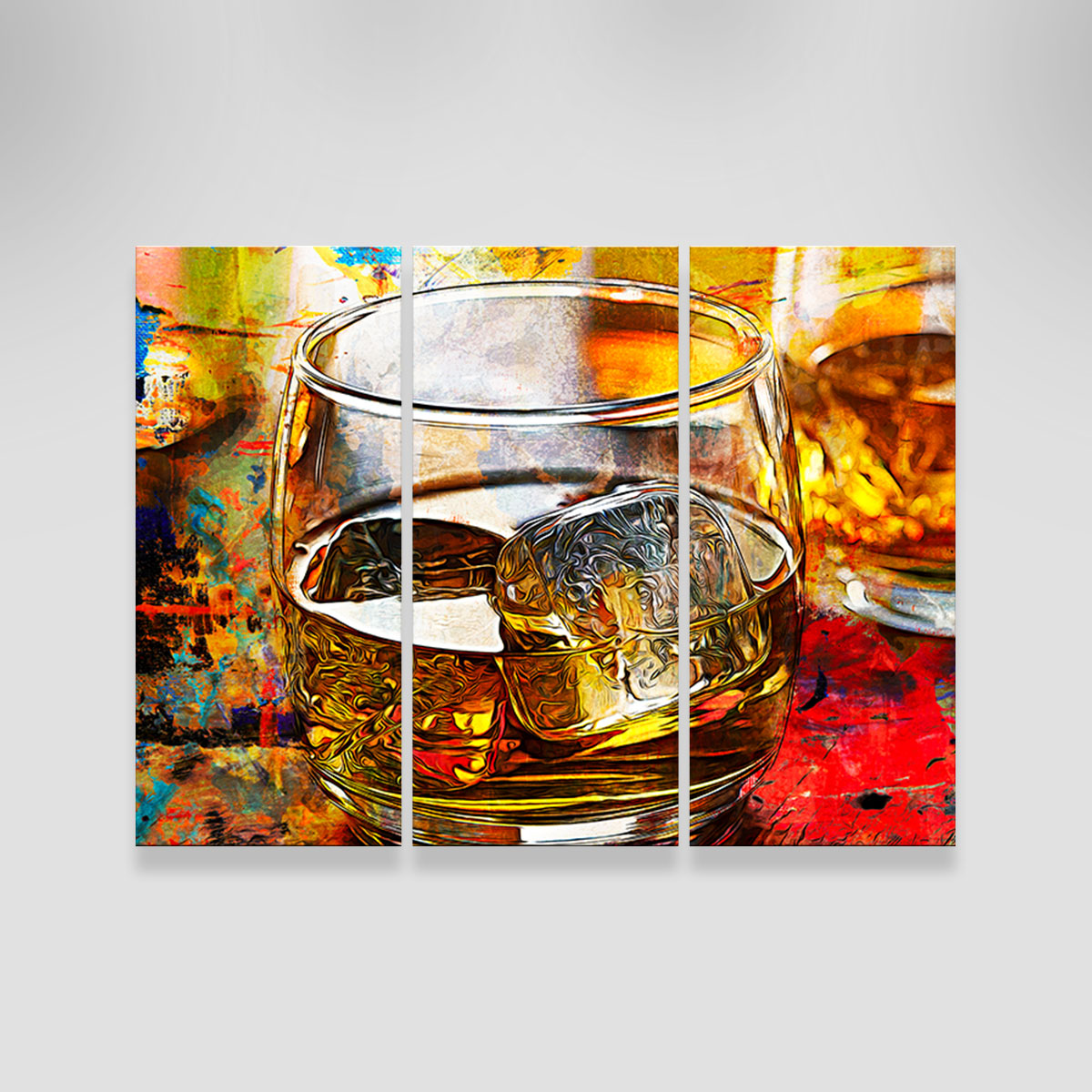Whiskey Art: Capturing the Essence of Distillation in Every Brushstroke
The Value of Whiskey Art in Celebrating Heritage and Workmanship in the Beverage Sector
The elaborate connection between whiskey art and the party of heritage and craftsmanship within the beverage market can not be overstated. Via attentively created tags and bottles, whiskey brand names encapsulate their historic roots and the artisanal skills that specify their manufacturing approaches.
The Historical Roots of Whiskey
At the heart of scotch's appeal lies an abundant tapestry of historical roots that trace back to ancient human beings. The beginnings of whiskey can be connected to the purification methods of the Sumerians and Babylonians around 2000 BCE, where very early types of fermented grain drinks began to arise. It was in the Middle Ages that the art of purification advanced substantially, specifically in Ireland and Scotland, leading to the creation of scotch as we know it today.
The term "scotch" itself stems from the Gaelic word "uisce beatha," implying "water of life." This expression underscores the cultural relevance of bourbon in Celtic societies, where it was usually associated with routines, celebrations, and communal bonding. By the 15th century, distillation ended up being an identified craft within monastic neighborhoods, paving the way for the establishment of lawful distilleries.
As trade paths expanded, bourbon's popularity grew, going beyond local boundaries and catching the passion of connoisseurs worldwide. Bourbon Art. This historic journey mirrors not just the craftsmanship behind scotch manufacturing yet additionally its important duty in social and social contexts, marking it as a significant beverage throughout background
Artistic Expression in Branding
Whiskey branding stands as a compelling intersection of artistry and business, where aesthetic identification plays a crucial role in shaping consumer perception. The looks of bourbon tags, product packaging, and marketing materials reflect not just the brand name's tale yet additionally its core worths and heritage. Via creative expression, distilleries communicate a narrative that reverberates with customers, stimulating feelings and triggering connections.
Using color, typography, and images in branding serves to separate products in a saturated market. Typical themes may stimulate a sense of credibility and craftsmanship, while modern-day styles can signify advancement and forward-thinking. This calculated artistic instructions improves brand acknowledgment and loyalty, permitting consumers to build a personal connection with the whiskey they select.
Furthermore, artistic expression in branding typically functions as an event of regional heritage. Distilleries often include regional icons or historic recommendations right into their styles, creating a feeling of area that invites customers to participate in a wider social experience. Ultimately, the creativity behind bourbon branding not only improves visual charm yet also enhances the general story of the brand name, promoting a much deeper appreciation for the workmanship and heritage ingrained in each container.
Craftsmanship in Container Layout
The virtuosity apparent in scotch branding expands past visual identity to include the craftsmanship entailed in container design. Each bottle serves as a vessel not simply for the spirit within, yet also for the story it outlines its top quality, origin, and tradition. The design process requires meticulous attention to detail, as elements such as form, closure, and find out this here product add significantly to the overall assumption of the bourbon.
Workmanship in container design involves selecting top notch glass that can boost the bourbon's color and clarity, while also giving a responsive experience for the consumer. The silhouette of the bottle have to be both useful and visually appealing, typically showing the heritage of the brand. Several distilleries decide for one-of-a-kind shapes or printed logos that stimulate a sense of credibility and background.
Moreover, the tag design and typography play a vital function in communicating the brand's narrative. Limited Edition. A well-crafted bottle not just captivates the consumer's eye yet additionally strengthens the brand's dedication to quality and practice. This way, the workmanship of container style becomes an essential element of the bourbon experience, merging virtuosity with a profound regard for heritage
Cultural Value of Whiskey Art
Celebrating tradition and workmanship, the cultural relevance of bourbon art transcends plain appearances, intertwining with the historical and social narratives of the areas where it originates. Each container functions as a canvas, depicting the one-of-a-kind stories, mythology, and practices that have formed neighborhood whiskey-making practices. The complex layouts typically mirror the heritage of the distillers, incorporating signs and concepts that reverberate with the culture and values of their areas.

Furthermore, bourbon art plays an important duty in common celebrations and celebrations, functioning as a tangible link between individuals and their from this source shared experiences. By appreciating the creativity in whiskey packaging, customers cultivate a much deeper understanding and respect for the craft, eventually enriching their pleasure of the beverage itself.
Modern Trends in Bourbon Presentation
In current years, the discussion of bourbon has progressed to mirror contemporary preferences and fads while still honoring typical workmanship - Whiskey Art. Distilleries are progressively concentrating on aesthetic aspects that improve the general drinking experience, connecting the space between heritage and modernity
Cutting-edge container layouts have actually arised, typically integrating lasting products and artistic labels that tell compelling tales. Lots of brands now work together with regional musicians, infusing their products with distinct visual expressions that reverberate with consumers. Additionally, limited-edition launches are frequently packaged in collectible containers, including worth and appeal for aficionados.

Verdict
Finally, scotch art offers as a vital conduit for revealing the heritage and workmanship inherent in the drink sector. Through elaborate branding, cutting-edge container layouts, and culturally significant artistic aspects, scotch brand names properly honor their customs and get in touch with customers. This imaginative story not just elevates the appreciation of whiskey however likewise strengthens neighborhood identification and satisfaction among manufacturers. Inevitably, bourbon art plays a vital function in preserving and celebrating the rich cultural tapestry of whiskey-making.


Craftsmanship in bottle layout entails choosing top notch glass that can improve the whiskey's shade and quality, while likewise offering a tactile experience for the customer. In this way, the workmanship of container style becomes an essential element of the scotch experience, merging virtuosity with a see page profound respect for heritage.
In verdict, scotch art offers as an important channel for revealing the heritage and craftsmanship inherent in the drink industry.